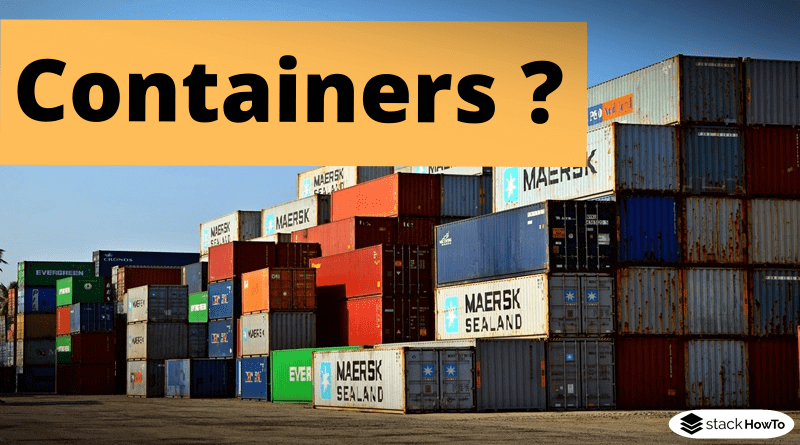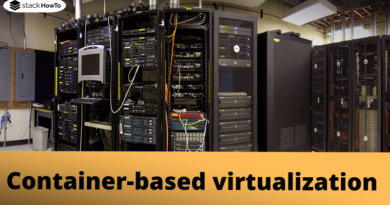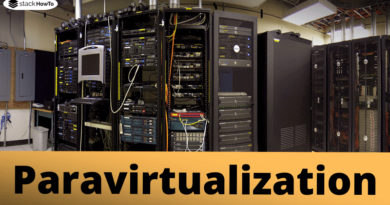What are containers and why are they necessary?
Applications are becoming more and more complex. The demand for faster development is constantly increasing. This also increases the load on the infrastructure, IT teams, and processes. Containers are one solution to the problem of how software can run safely when moving from one computing environment to another. Here’s what you need to know about this popular technology.
What are containers?
Containers are one solution to the problem of how software can run reliably when moving from one computing environment to another. This can be done from a developer’s laptop to the test environment, from a staging environment to production, and possibly from a physical machine in a data center to a virtual machine in a private or public cloud.
A container is a software package that contains everything you need to run the software: code, runtime, configuration, and system libraries to run the program on any host system. At runtime, the container also receives its own isolated part of the operating system resources such as CPU, RAM, hard disk, and network.
Containers first appeared decades ago with versions like FreeBSD Jails and AIX Workload Partitions, but most modern-day developers remember 2013 as the beginning of the modern container era with the introduction of Docker.
How do containers work?
To understand containers and their function, we first need to understand virtualization. With virtualization, shared computing resources such as CPU, RAM, hard disk, and network are divided into isolated resources that do not know the original shared area. When virtualizing a machine using virtual machines or containers, the host machine’s resources are essentially divided into sections that are to be used by the virtualized components. Containers virtualize a machine operating system at the user area level.
The virtualization of the user area uses the existing mechanisms with which system resources are divided between separate user accounts and programs on an operating system. Container systems generally have a separate orchestration utility command or server daemon. The orchestration utility is responsible for dividing the host operating system’s userspace resources, assigning those resources to containers, and then running and monitoring the containers.
Three functions of containers
The term container is an abstract concept, but three functions can help you visualize exactly what a container is doing.
- Namespaces: A namespace provides a container with a window to the underlying operating system. Each container has several namespaces that provide different information about the operating system. An MNT namespace limits the mounted file systems that a container can use. A USER namespace changes a container’s view of user and group IDs.
- Control groups: This feature manages resource usage and ensures that each container only uses the CPU, memory, hard drives, and network that it needs. Control groups can also implement tough usage restrictions.
- Union file systems: The file systems used in containers are stackable, i.e. Files and directories in different branches can be overlaid to form a single file system. This system prevents data from being duplicated every time a new container is deployed.
Advantages of containers
- Less overhead: Containers use fewer system resources.
- Increased Portability: Applications running in containers can easily be deployed on multiple different operating systems and hardware platforms.
- Greater efficiency: Containers allow applications to be deployed, patched, or scaled faster.
- Better application development: Containers help accelerate development, test, and production cycles.
Containers drastically reduce the number of variables that developers have to process when switching between development, test, and production environments. This increases agility dramatically. It no longer takes hours or days for an application to run in a test environment. Tests can be run directly on a container image.
Very few companies in older industries do not have some legacy applications that have endured over the years. By introducing these into containers, a single monolithic application can be converted into multiple agile, specially designed containers. Splitting an application this way makes patch management a lot easier by updating only the container that needs it and avoiding system downtime.
Disadvantages of containers
- Containers don’t run at Bare-Metal Speed.
- Not all container applications are compatible with each other.
- Persistent data storage is complicated.
- Graphics applications don’t always work well.
Conclusion
Containers are an important part of the modern developer toolset. Regardless of which term or container platform you choose, the benefits of containers will help your teamwork more effectively. Using containers, you can streamline both the local development process and the remote deployment process while ensuring that you are delivering quality software products to your customers.





